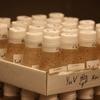Insulin regulates an essential conserved signaling pathway affecting growth, proliferation, and meta- bolism. To expand our understanding of the insulin pathway, we combine biochemical, genetic, and computational approaches to build a comprehensive Drosophila InR/PI3K/Akt network. First, we map the dynamic protein-protein interaction network sur- rounding the insulin core pathway using bait-prey interactions connecting 566 proteins. Combining RNAi screening and phospho-specific antibodies, we find that 47% of interacting proteins affect pathway activity, and, using quantitative phospho- proteomics, we demonstrate that $10% of interact- ing proteins are regulated by insulin stimulation at the level of phosphorylation. Next, we integrate these orthogonal datasets to characterize the structure and dynamics of the insulin network at the level of protein complexes and validate our method by iden- tifying regulatory roles for the Protein Phosphatase 2A (PP2A) and Reptin-Pontin chromatin-remodeling complexes as negative and positive regulators of ribosome biogenesis, respectively. Altogether, our study represents a comprehensive resource for the study of the evolutionary conserved insulin network.
Cell-based RNAi
. 9/13/2016. “An Integrative Analysis of the InR/PI3K/Akt Network Identifies the Dynamic Response to Insulin Signaling.” Cell Reports, 16, 11, Pp. 3062-3074.Abstract
Is it a hit? On mining our data sets.
2016
Sep
23
DRSC & TRiP at TAGC 2016
Beta-testing a "Drosophila Protocols Portal"
2016
Sep
28
. 2012. “FlyRNAi.org--the database of the Drosophila RNAi screening center: 2012 update.” Nucleic Acids Res, 40, Database issue, Pp. D715-9.Abstract
. 2006. “A genome-wide Drosophila RNAi screen identifies DYRK-family kinases as regulators of NFAT.” Nature, 441, 7093, Pp. 646-50.Abstract
. 2007. “A genome-wide RNAi screen reveals multiple regulators of caspase activation.” J Cell Biol, 179, 4, Pp. 619-26.Abstract
. 2009. “PDGF/VEGF signaling controls cell size in Drosophila.” Genome Biol, 10, 2, Pp. R20.Abstract
. 2010. “Modifiers of notch transcriptional activity identified by genome-wide RNAi.” BMC Dev Biol, 10, Pp. 107.Abstract
. 2012. “BUHO: a MATLAB script for the study of stress granules and processing bodies by high-throughput image analysis.” PLoS One, 7, 12, Pp. e51495.Abstract
. 2015. “Reagent and Data Resources for Investigation of RNA Binding Protein Functions in Drosophila melanogaster Cultured Cells.” G3 (Bethesda), 5, 9, Pp. 1919-24.Abstract



